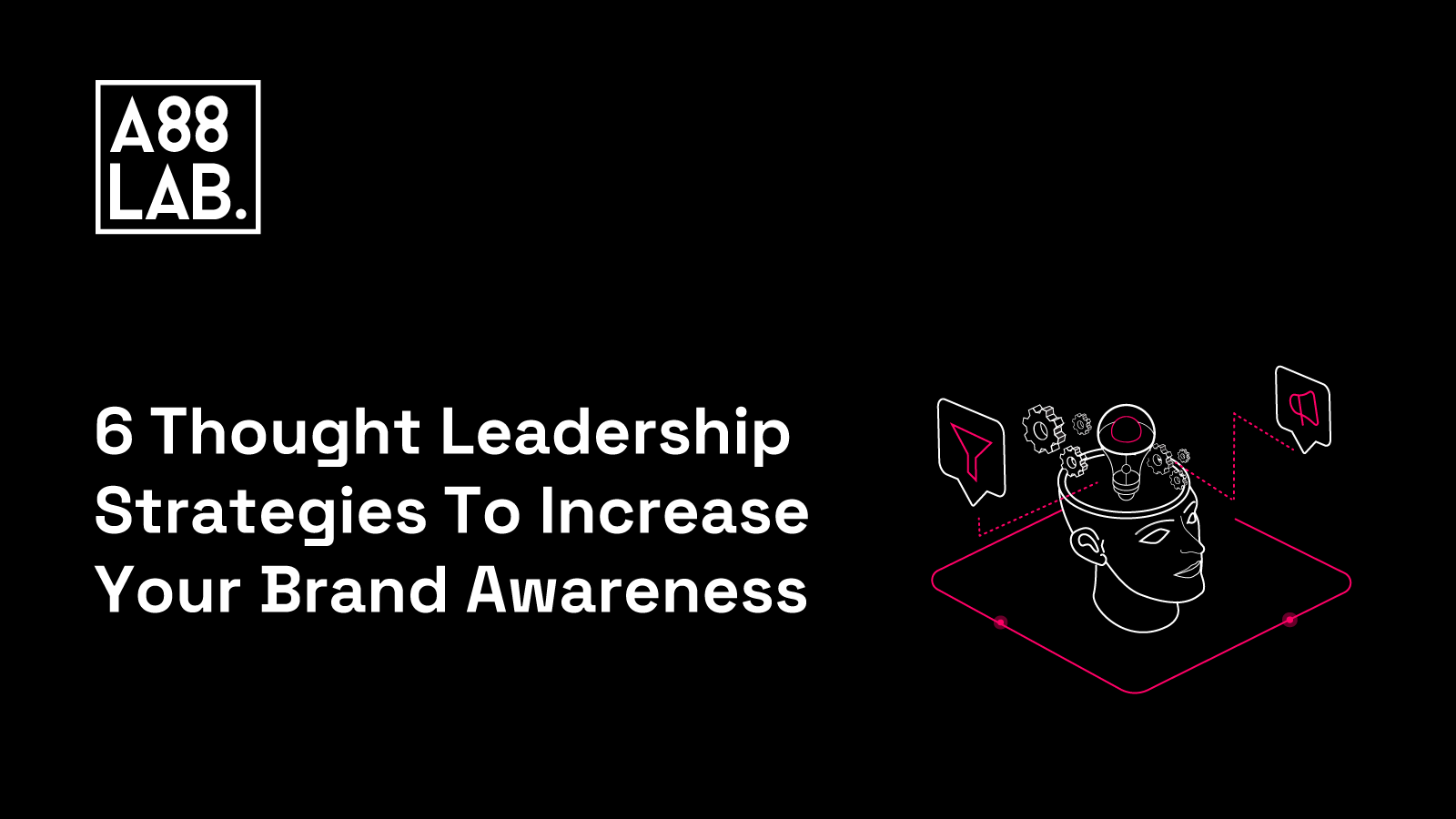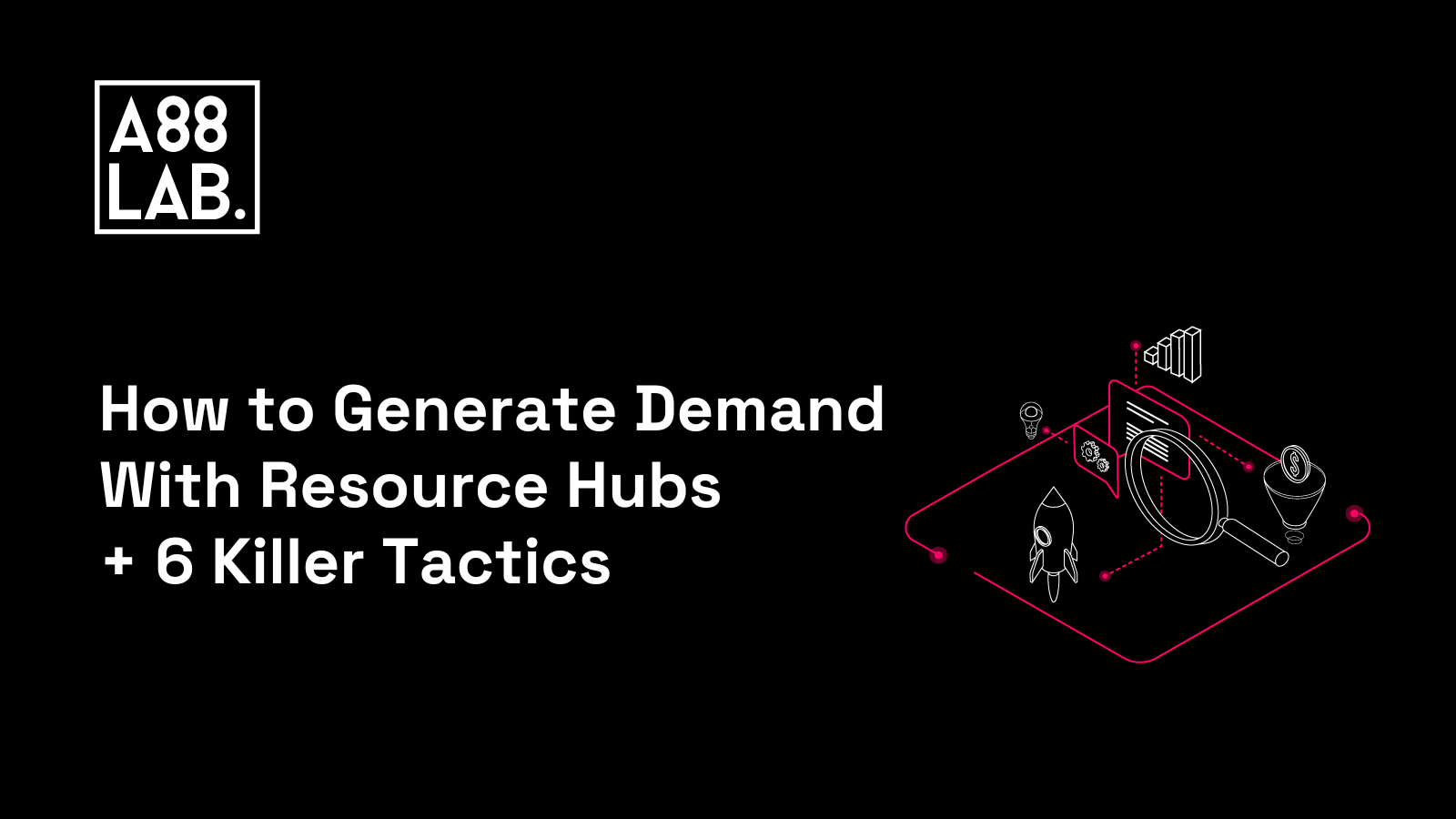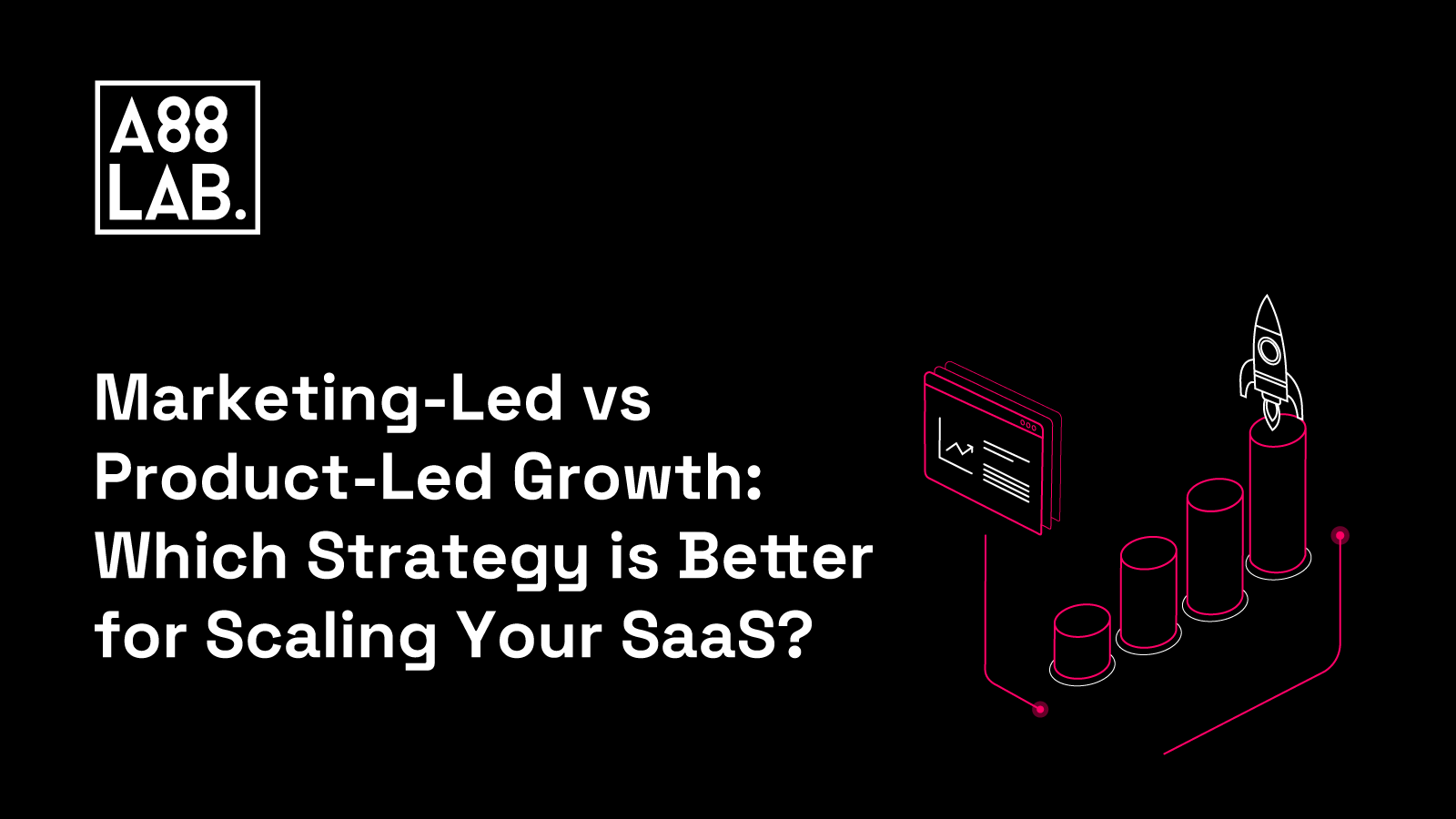You don’t become a thought leader by aiming to become one; you become one by giving real value and information that people can’t find elsewhere and making a lasting impact on your community. Thought leaders deliver steps that drive others toward success and tune out the noise around them. The first thing they all share is their passion for the subject and knowing how to connect with their community. The second thing is their goal to educate, not sell.
With that in mind, thought leadership and brand awareness go hand-in-hand. By establishing yourself (or your brand) as a thought leader in your community, you also increase your brand awareness and credibility. But how do you start your thought leadership journey? Before we jump into six strategies that can help you get on the right path, let’s look at what role thought leadership plays in building brand awareness.
The Role of Thought Leadership in Building Brand Awareness
With so many brands, companies, and business gurus' voices fighting for attention, how do you really stand out and make an impact? How do you show that you push the boundaries of conventional thinking and that your ideas are valuable and worth considering?
While we can find the answer in implementing thought leadership strategies, you need to understand that thought leadership isn't about self-promotion or selling your products/services. That part will come naturally if you are providing value to your community.
In most cases, thought leaders don't just focus on their brand; they also strive to elevate the industry as a whole. By sharing knowledge, ideas, and opinions, they raise the bar for everyone and drive innovation.
So, where does brand awareness come into play? The more you talk about your area of expertise, the more people will start associating you with it. And as your community grows, brand awareness follows. Additionally, when people see that you consistently provide valuable insights and ideas, they will naturally be drawn to your brand and want to learn more about what you offer.
To take advantage of the full capacity of thought leadership when building your brand awareness, you need to have a plan in place. This is where the six strategies we are about to discuss come into play.
Thought Leadership Strategies for Increasing Brand Awareness
Establishing yourself as a thought leader for a specific industry is not an easy thing to do. But don't worry - we've got you covered! Here are six thought leadership strategies that are gonna help you provide genuine value, position yourself as a go-to person in your industry, elevate your brand, and increase your brand awareness.
1. Figure Out Your Expertise
If you're aspiring to become a thought leader, that doesn't mean you have to become an expert in every domain; it means choosing one in which you'll excel. Look at the industry leaders with the most influence, and you'll discover they aren't generalists. They have a focused area of expertise they are passionate about and have often spent years studying, researching, and writing about.
They know their strengths and leverage them to provide new, unique, or more valuable insights to their customers.
Ask yourself, what is something you know more about than the average person, what's something you're passionate about, and what sets you apart from others in that industry? Finding your niche is the first crucial step towards becoming a thought leader.
Whether it's industry thought leadership, focusing on market news and trends; organizational thought leadership, embodying the brand's vision and values; or product thought leadership, becoming a product expert, choose your area of expertise and stick with it.
Jason M. Lemkin, thought leader in SaaS
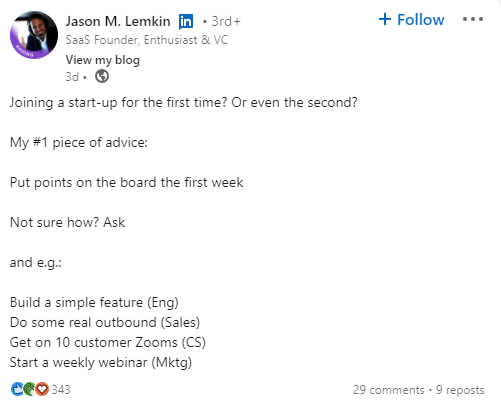
2. Be Part of Niche Discussions
Niche marketing focuses on targeting your marketing efforts to a specific group of people who have shared characteristics or interests. Unlike broader marketing strategies that are mostly used for attracting a wide audience, niche marketing caters to a specific group of consumers and their needs, interests, and preferences. By deciding to be a part of a particular niche and focusing your thought leadership efforts on it, you'll have a more targeted audience that will be more receptive to your message.
Start your own podcast, join as a guest on relevant podcasts, participate as a webinar speaker, or participate in round table discussions. Share your insights, answer questions, and address concerns to position yourself as a valuable contributor and establish a genuine connection with your community.
This two-way communication is a great way to build trust and credibility and make your brand more relatable to your audience. Remember, thought leadership isn't just about what you say; it is also about how you engage and contribute to the ongoing dialogue in your industry.
If you want to become the go-to person in the SaaS field, you can start by joining the r/SaaS forum on Reddit or similar platforms. r/SaaS is a community where SaaS founders share their honest experiences, the good, the bad, and the ugly. When you see someone struggling there, try to jump in, offer your thoughts and help, and let your presence be known in the SaaS niche
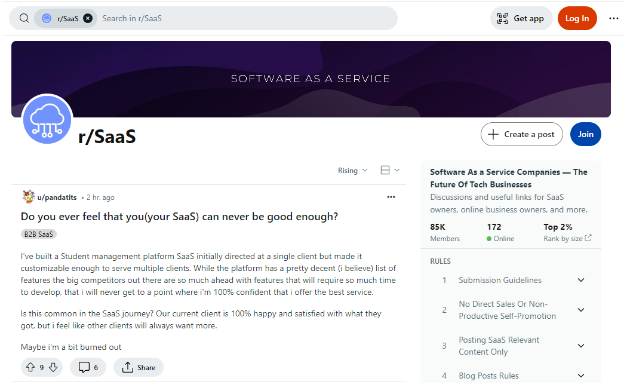
3. Engage in High-Engagement Topics on the Dark Social
Another effective way to set yourself as a thought leader is by taking part in high-engagement topics on dark social media channels. While this requires a more strategic approach, it will allow you to connect with your audience on a more personal level. Do some research and identify relevant private groups, forums, or direct message platforms where your target audience is active, and find spaces where they feel comfortable sharing their thoughts and opinions.
Join these spaces and observe the ongoing conversations and concerns of the audience. Once you've gained enough insights and feel ready to contribute, do it! Share valuable content, insights, and solutions that are relevant to the conversation. Try to be as helpful and provide practical advice that people can actually use. Don't be afraid to show off what you know, but do it in a way that's helpful and not pushy or overly promotional.
4. Analyze ICP Engagement Patterns
Thought leaders are often solving people's problems. When trying to become one for a specific niche, you have to recognize the most common pain points of that niche and the topics they are interested in. What better way to do it than by analyzing the patterns of your Ideal Customer Profile's (ICP) engagement?
Look for trends and commonalities in their behavior, what they are sharing or commenting on, and the questions they are asking. This will give you a better understanding of what matters to them and how you can position yourself as a thought leader who can provide valuable insights and solutions.
Let's take a Lavender AI as an example. By the way they produce content, you can see that this company has a deep understanding of its audience. Lavender AI figures out what sellers and their target audience are struggling with and what topics are the most interesting to them.
They know that writing effective cold emails is important to their audience, so they consistently produce content that helps with that. Their website is a great place to learn, with blog posts about sales strategies, cold email techniques, and a knowledge library that covers features, integrations, and troubleshooting.
Lavender AI's LinkedIn profile is another way they authority by offering all sorts of engaging content like short videos about sales, carousels about email frameworks, or even funny email memes.
By creating content that speaks to the interests and pain points of their ICPs, Lavender AI shows that they're experts and that they really get their audience and know them inside out.
5. Create a New Category
Creating a new category and establishing thought leadership often go hand in hand. When you introduce a new category, you're essentially shaping the way people think about a particular subject or industry. This innovative thinking positions you as a thought leader, someone who is at the forefront of ideas and trends.
Creating a new category comes with a fair share of educating the market about the problem, its solutions, and the benefits of the new approach. By creating a new category, you're not only showing your expertise but also challenging the status quo. This challenges others to rethink their approach and positions you as a visionary in your field.
Additionally, being the pioneer of a new category, you gain a competitive advantage that allows you to set the narrative and become the go-to source for information and expertise. People naturally look up to thought leaders for guidance and direction, and by creating a category, you're essentially guiding the conversation.
Drift is one of those SaaS companies that have managed to create a new category and establish thought leadership in their field. How did they do it? They recognized there is a shift in the market, and buyers are shaping the buyer journey now. They also recognized that the live chat tools were primarily seen as passive communication channels, and there is a need for a more comprehensive conversational marketing platform.
The core product of Drift is its live chat tool, which allows businesses to have instant conversations with their website visitors. This helps them capture leads, provide customer support, and drive sales. By launching its "Conversation Cloud," Dift changed the way people think about customer communication and became a pioneer in the world of conversational marketing.
6. Stay Consistent and Monitor Your Results
Finally, without being consistent and tracking how well your thought leadership strategies are working, it's hard to know if you're on the right track.
Make sure to regularly review your content performance metrics and tweak your strategies accordingly. Monitor your website traffic, social media engagement, email click-through rates, and other relevant data points to see how your thought leadership efforts are impacting your brand awareness.
Don't be afraid to ask for feedback from industry experts or your target audience. Without it, it's hard to identify areas for improvement and make necessary adjustments.
That said, being consistent doesn't mean you have to stick to a super strict schedule. It's more about keeping an eye out for new topics, what your audience likes, and how you're performing on different platforms.
Use data you have access to and make improvements where needed. This will help you refine your thought leadership strategies and continue to increase your brand awareness in the B2B SaaS market. Checking how well your content is performing isn't just about seeing how many likes you got. Listen to what people are saying and talk to them about it.
Communication is key in thought leadership, so use it to improve and grow. With these six strategies in mind, you can take your B2B SaaS brand awareness to the next level. Start by building trust and credibility through valuable content, staying relevant and timely with trending topics, collaborating with other industry leaders, using social media platforms effectively, and constantly monitoring and tweaking your strategies based on data and feedback.
Conclusion
Implementing these thought leadership strategies goes beyond just promoting your brand; it involves creating a genuine connection with your audience, providing valuable insights, and actively participating in industry conversations.
When you're trying to establish yourself as a thought leader, be sincere and honest in your communication with your audience. People tend to connect with leaders who are genuine, transparent, and stay true to themselves. So, share your experiences, successes, and even failures as they contribute to a more relatable and human narrative. Staying true to your brand's identity and values is the key to creating a powerful and lasting brand.
.png)
